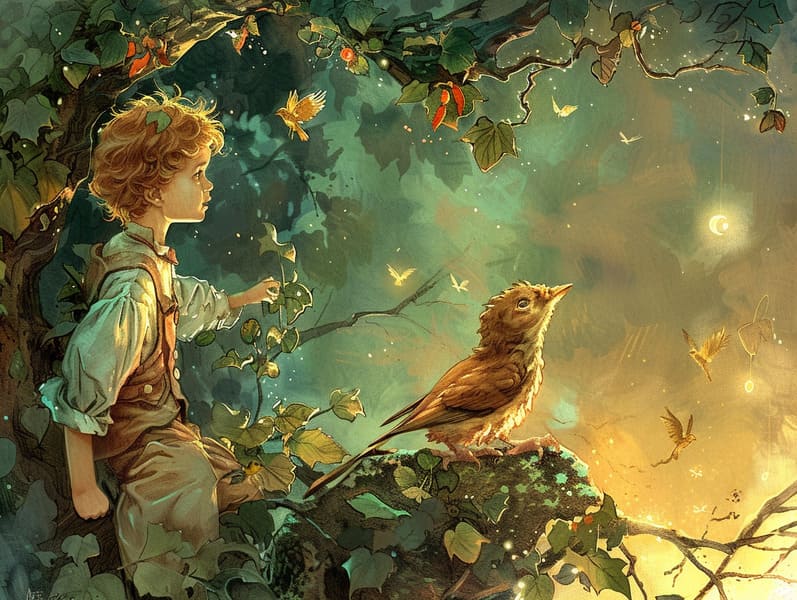The Rise of Children's Fairy Tales with Their Perpetual Wonder.
The Rise of Children's Fairy Tales with Their Perpetual Wonder.
Blog Article

Fairy tales have old origins. These stories have been told from one generation to the next ages before they were ever published. They sprang from a variety of cultures, including Indigenous traditions. They were initially passed along among mature audiences, often carrying themes and messages pertaining to the societal norms and beliefs of the time.
Jacob and Wilhelm Grimm, Jacob and Wilhelm (the Grimm brothers), were among the first to compile many of these beloved stories. Their published works, "Grimm's Fairy Stories," included narratives like "The Little Glass Slipper," "The Story of Hansel and Gretel," and "Snow White," which have since become pillars in the world of beloved fairy tales. Similarly, Hans Christian Andersen's delightful narratives, such as "The Little Mermaid," and "The Little Duckling," have captured hearts worldwide, solidifying their place in the pantheon of timeless fairy tales.
Despite being ancient, fairy tales remain as meaningful as ever, especially as children's night stories. These fantastical tales are now available in numerous formats, including richly illustrated books, whimsical animations, and online storybooks.
Their persistent charm can be credited to several captivating elements:
Ethical Lessons: Traditional fairy tales often illustrate important moral lessons. Fairy tales like "The Story of the Boy Who Cried Wolf" teach the merit of truth, while "The Hare and the Tortoise" emphasize the qualities of tenacity and unassuming nature. These stories offer children clear distinctions between right and wrong, helping to shape their moral compass in a soft yet lasting way.
Kindness and Comprehension: Fairy tales frequently feature heroes facing struggles and tests, stimulating children to feel with their struggles and back their triumphs. For instance, "Beauty's Beast" teaches us the virtue of seeing beyond looks to perceive the true character of a character, developing compassion and perception.
Cultural Comprehension: Many fairy tales are deeply ingrained in the cultural contexts from which they grew. Immersing in these stories can provide enlightening views into different social structures, promoting a sense of world understanding and comprehension.
Creativity and Imagination: The whimsical elements in old fairy tales—enchanted lands—provoke children’s inventiveness. These tales move readers to magical realms, engendering creative ideas and a sense of excitement that remains a lifetime.
Ancient fairy tales are not only delightful but also pedagogical. They function as whimsical tools in cultivating various intellectual and emotional capacities in the young. When timeless fairy tales are read aloud, they strengthen speaking abilities by showing new linguistic elements and complicated sentence structures. This practice also advances hearing perception and attention, as little ones stay focused, excited to see what happens next.
Furthermore, reflecting on the themes and characters of ancient fairy tales can foster thought processes and problem-solving abilities. Children are led to recognize patterns, expect results, and figure out cause and effect. These contemplations also contribute to children convey their thoughts and feelings, advancing their check here emotional intelligence.
In today’s technological age, the proliferation of internet fairy tales has made these tales more accessible than ever. Digital sites and programs extend comprehensive collections of traditional fairy tales that can be browsed or listened via anytime, anywhere. Fairy tales read out loud are particularly common, sharing an interactive method for little ones to immerse in these spellbinding stories. Spoken stories and read-out-loud stories carry characters and settings to life, often joined by fantastical audio effects and instrumentals that raise the tale-telling adventure.
The persistent attraction of timeless fairy tales lies in their ability to evolve to changing times while preserving their fundamental ideas. Contemporary reinterpretations of these narratives often incorporate more varied characters and modern settings, making them understandable to today’s audience. However, the essential messages of bravery, generosity, and lawfulness remain unchanged, continuing to resonate with kids of all ages.
Fairy tales also offer a sense of comfort and closeness. They impart upon a neat narrative with a recognizable beginning, middle, and end, often wrapping up with the resolution of conflicts and the triumph of good over bad. This regularity can be easing for children, gifting a sense of unwaveringness in an always shifting world.
Ancient fairy tales continue to allure and instruct new generations, maintaining their delight and importance in modern society. As kids' bedtime tales, they afford a perfect blend of charm and enlightenment, boosting moral values, empathy, and creativity. The abundance of digital fairy tales and the sought after status of fairy tales recited assure that these classic fairy tales remain within reach to new generations.
By holding onto and communicating these stories, we continue to exalt the rich tapestry of storytelling and cultural heritage. Whether you are experiencing a vividly illustrated book, viewing a virtual collection, or listening to an read-aloud story, the enchantment of traditional fairy tales is always within reach. These stories emphasize of the unwavering impact of tales and its ability to bind us across centuries and lands.
Be it you are delving into a richly illustrated book, seeing a online collection, or listening via an audiobook, the magic of ancient fairy tales is always within reach.
These narratives point out of the endless nature of storytelling and its ability to bond us across time and space, making a tie that enchants and educates alike.